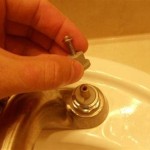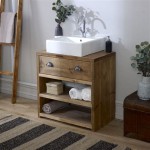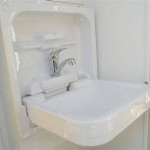How To Remove Mould From Bathroom Walls And Ceiling: Same Color Application
Mould growth in bathrooms is a pervasive problem, especially in environments with high humidity and poor ventilation. The presence of mould not only presents aesthetic concerns but also poses potential health risks. This article details a comprehensive process for removing mould from bathroom walls and ceilings, focusing on addressing instances where the mould exhibits a similar color to the underlying surface, making it harder to detect and treat.
The key to effective mould removal lies in understanding its nature and employing the appropriate techniques. Mould thrives in damp, dark conditions, feeding on organic materials commonly found in building materials and accumulated dirt. Effective removal involves killing the mould, cleaning the affected surfaces, and implementing preventative measures to inhibit future growth.
Identifying Mould: Differentiating Between Mould and Stains
The initial step is to accurately identify the presence of mould. In bathrooms, discoloration on walls and ceilings is not always mould; it may be a stain caused by water damage, soap scum, or mineral deposits. Distinguishing between these is crucial for applying the correct treatment.
Mould typically appears as fuzzy or slimy patches, often exhibiting a musty odor. Its texture is noticeably different from the smooth, hard surface of a stain. Mould also tends to spread and grow over time, while stains usually remain static. When the discoloration closely matches the wall or ceiling color, careful examination is essential. Use a bright light source held at different angles to better observe the texture and any subtle color variations. If uncertain, a simple test involves applying a drop of household bleach to a small, inconspicuous area. Mould will typically lighten or disappear within a minute or two, while other types of stains will remain largely unaffected. However, this test should be performed with caution, as bleach can discolor some surfaces.
Furthermore, it’s important to consider the location of the discoloration. Mould is most likely to appear in areas with high humidity and poor ventilation, such as corners, around showers and bathtubs, and near windows. Water stains, conversely, may appear in areas directly exposed to water leaks or condensation.
Preparing for Mould Removal: Safety Precautions and Materials
Before initiating the mould removal process, prioritize safety. Mould spores can trigger allergic reactions and respiratory problems in susceptible individuals. Adequate protection is therefore essential.
Wear appropriate protective gear. This includes a respirator mask rated N-95 or higher to prevent inhalation of mould spores. Safety glasses or goggles will protect the eyes from splashes of cleaning solutions and dislodged mould particles. Wear disposable gloves to prevent direct skin contact with mould and cleaning agents. Cover exposed skin with long sleeves and pants to further minimize exposure.
Ensure proper ventilation. Open windows and use a fan to circulate air throughout the bathroom. This helps to remove airborne mould spores and reduce the concentration of cleaning solution vapors. If possible, consider using an exhaust fan to draw air out of the room. If the bathroom lacks adequate ventilation, consider using a portable air purifier with a HEPA filter to capture airborne particles.
Gather the necessary materials. A variety of cleaning solutions are effective for mould removal. These include:
*Bleach solution: Mix one part household bleach with ten parts water. This is a powerful disinfectant but can discolor some surfaces. Always test in an inconspicuous area first.
*Vinegar: White vinegar is a natural disinfectant and effective mould killer. Use undiluted.
*Baking soda: A mild abrasive and deodorizer. Mix with water to form a paste.
*Commercial mould removers: Available at most hardware stores. Follow the manufacturer's instructions carefully.
Other essential materials include:
*Spray bottle: For applying cleaning solutions.
*Scrub brush or sponge: For scrubbing affected surfaces.
*Soft cloths: For wiping surfaces clean.
*Scraper or putty knife: For removing stubborn mould deposits.
*Ladder or step stool: For reaching high areas, such as ceilings.
*Trash bags: For disposing of contaminated materials, such as sponges and cloths.
Step-by-Step Mould Removal Process: Cleaning Walls and Ceilings
With the necessary precautions and materials in place, proceed with the mould removal process. The following steps provide a detailed guide for cleaning mould from bathroom walls and ceilings, particularly when the mould is of a similar color to the surface.
Begin by pre-cleaning the affected area. Use a clean, damp cloth to wipe away any loose dirt, dust, or debris. This will allow the cleaning solution to penetrate the mould more effectively. Avoid using excessive water, as this can exacerbate the problem by providing more moisture for the mould to thrive on.
Apply the chosen cleaning solution. If using bleach solution, spray it liberally onto the affected area, ensuring complete coverage. Allow the solution to sit for 10-15 minutes to allow it to penetrate and kill the mould. For vinegar or baking soda paste, apply directly to the mould and allow it to sit for a similar period. If using a commercial mould remover, follow the manufacturer's instructions for application and dwell time.
Scrub the affected area. After the cleaning solution has had time to work, use a scrub brush or sponge to thoroughly scrub the mould. Apply firm, even pressure to dislodge the mould from the surface. If the mould is stubborn, use a scraper or putty knife to carefully scrape it away. Be careful not to damage the underlying surface. For textured surfaces, such as popcorn ceilings, use a soft-bristled brush to avoid damaging the texture.
Rinse the surface. After scrubbing, thoroughly rinse the treated area with clean water. Use a clean, damp cloth to wipe away any remaining cleaning solution and dislodged mould particles. Ensure that all traces of the cleaning solution are removed, as they can leave a residue that may attract dirt or contribute to future mould growth.
Dry the surface thoroughly. Use a clean, dry cloth to wipe the treated area dry. Ensure that all traces of moisture are removed, as moisture is essential for mould growth. If possible, use a fan or dehumidifier to further dry the area. Pay particular attention to corners and crevices, as these areas are more prone to retaining moisture.
Inspect the area and repeat if necessary. After the surface is completely dry, inspect it carefully for any remaining traces of mould. If any mould is still visible, repeat the cleaning process. It may be necessary to apply a second or third application of the cleaning solution to completely eradicate the mould. For particularly stubborn mould infestations, consider using a stronger cleaning solution or seeking professional assistance.
Dispose of contaminated materials. After completing the mould removal process, carefully dispose of all contaminated materials, such as sponges, cloths, and gloves, in a sealed trash bag. This will prevent the spread of mould spores to other areas of the house. Wash any reusable cleaning tools thoroughly with hot, soapy water.
Consider repainting the affected area. If the mould has caused staining or discoloration, consider repainting the affected area. Before painting, apply a mould-resistant primer to the surface. This will help to prevent future mould growth. Choose a paint that is specifically formulated for bathrooms, as these paints are designed to resist moisture and mould.
After painting, maintain good ventilation in the bathroom. Run the exhaust fan during and after showers and baths to remove excess moisture. Open windows whenever possible to allow fresh air to circulate. Regularly clean the bathroom to remove soap scum and other organic materials that can provide a food source for mould.
Regular inspection and preventative maintenance are crucial for preventing future mould growth. Check for leaks and address them promptly. Ensure that the bathroom is properly ventilated. Clean regularly and remove any standing water. By taking these measures, it is possible to keep the bathroom mould-free and maintain a healthy living environment.

How To Get Rid Of Mould On Walls Permanently Decorator S Forum

Mold On Bathroom Ceiling Wipe Out With Diy Remedies

What Is The Best Way To Remove Mold From Bathroom Ceiling

Mold On Bathroom Ceiling What To Do And When Call Branch Environmental

Mold On Bathroom Ceiling Wipe Out With Diy Remedies

How To Get Rid Of Mold In The Shower On Bathroom Walls Clorox

How To Get Rid Of Mold In Bathroom 2024 Tips From Puroclean

Don T Let Mould Take Over How To Remove It From Your Ceiling

Ceiling Mold Growth Learn The Cause And How To Prevent It Environix

Ceiling Mold Growth Learn The Cause And How To Prevent It Environix
Related Posts







